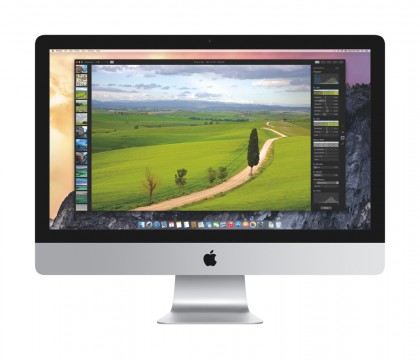Apple announced a 16GB iPod touch with a 5 Megapixel camera for $199. Not too shabby. Though it’s clearly not a replacement for the iPhone, if you have regular WiFi access, this is a pretty nice alternative, one that doesn’t come with a monthly contract.
CUPERTINO, California—June 26, 2014—Apple® today announced its 16GB iPod touch® is now available in vibrant colors and equipped with a 5 megapixel iSight® camera for just $199. The entire iPod touch lineup features the 5 megapixel iSight camera with 1080p HD video recording, brilliant 4-inch Retina® display, Apple’s A5 chip and FaceTime® camera. iPod touch features an ultra-thin and light anodized aluminum design and is available in pink, yellow, blue, silver, space gray and (PRODUCT) RED. iPod touch comes in a 16GB model for $199, 32GB for $249, and 64GB for $299.
iPod touch comes with iOS 7, offering more than 200 features including Camera app filters that let you easily add real-time photo effects. Additionally, the Photos app offers ways to automatically organize your photos based on time and location. With iCloud® Photo Sharing, it’s simple to share photos and videos with exactly the people you want to see them and your friends and family can comment and access their shared streams from any iPhone®, iPad®, iPod touch, Mac® or PC at any time. This fall, iOS 8 will be supported on the entire iPod touch lineup.
With the revolutionary App Store℠ on iPod touch, users in 155 countries have access to over 1.2 million apps for iPhone, iPad and iPod touch, including hundreds of thousands of games. More than 75 billion apps have been downloaded from the App Store. Customers also have the iTunes Store® at their fingertips, giving instant access to an incredible selection of music, TV shows, movies and books to purchase and download directly to their iPod touch.
Pricing & Availability
iPod touch 16GB is available starting in the US today and worldwide in the coming days, in pink, yellow, blue, silver and space gray through the Apple Online Store (www.apple.com), Apple’s retail stores and Apple Authorized Resellers for a suggested price of $199 (US). Starting today, the 32GB and 64GB models have been repriced worldwide, at a suggested price of $249 (US) for the 32GB model and $299 (US) for the 64GB model. iPod touch requires a Wi-Fi connection or a Mac with a USB 2.0 or USB 3.0 port, Mac OS X v10.6.8 or later and iTunes® 10.7 or later; or a Windows PC with a USB 2.0 port and Windows 7, Windows Vista or Windows XP Home or Professional with Service Pack 3 or later and iTunes 10.7 or later. An Apple ID is required for some iPod touch features.

